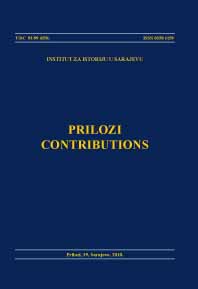Iz historije pčelarstva u srednjem vijeku (Košnice, pčele i med na uzgoju i u pljačkama u Dubrovniku i dubrovačkom zaleđu)
From the History of Beekeeping in the Middle Ages (Culture and robbery of beehives, bees and honey in Ragusa and its hinterland)
Author(s): Esad KurtovićSubject(s): History
Published by: Institut za istoriju
Keywords: med; vosak; pčelarstvo; Dubrovnik; dubrovačko zaleđe
Summary/Abstract: Honey and wax were extremely important in the development of human communities during the Middle Ages. Honey was the main sweetener and wax was significant for light. Clear traces and proof of this exist in written documents concerning the Eastern Adriatic coast. Beekeeping was established and developed on the wider area of Ragusa. It can be said that every reputable household possessed an apiary with a number of beehives. The Ragusans did not have a lot of free space so they were forced, just like with other cattle, to lease out their bees to other individuals in the hinterland for keeping under specific circumstances. The areas in question were mostly the neighbouring regions of Trebinje and Popovo Polje. Beekeeping contracts implied the division of honey, wax and swarms between the owner and the keeper from the hinterland. The hives with bees and honey were often a subject of robberies, especially on the Ragusan area. In the period between 1373 and 1468 there were 69 robberies connected to bees, and a significant number of these robberies, 52 in total, were executed in the Ragusan area from 1411 to 1467. Altogether 410 beehives were stolen, 113 in the hinterland, and 297 in the Ragusan area, and this is a fact which speaks of the continued interest of robbers and the value of bee products on the Eastern Adriatic coast. The scarce examples of price indicators show that the value of one beehive with honey amounted to around two golden ducats, that is 72 silver Ragusan dinars.
Journal: Prilozi
- Issue Year: 2010
- Issue No: 39
- Page Range: 11-30
- Page Count: 20
- Language: Bosnian

